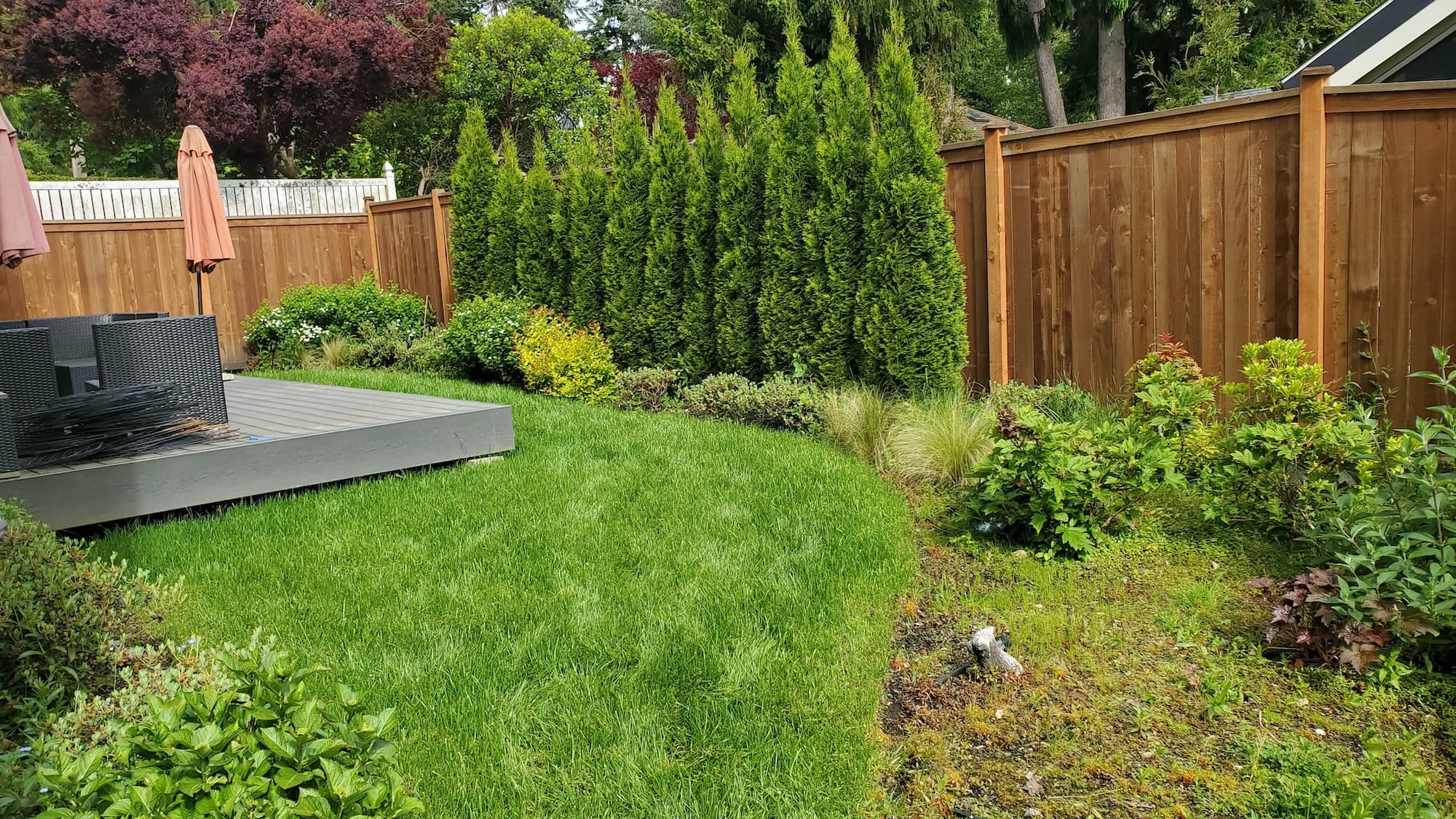Weeding Remove weeds growing through fabric
Homeowner’s Issue
Weeding yards in our part of King County face the typical Pacific Northwest mix: lots of winter rain, short dry summers, and soils that can compact or stay soggy in low spots. Many homeowners in Weeding and nearby White Center find landscape fabric fails where water pools, slopes concentrate runoff, or organic mulch builds up on top—giving weeds a foothold right through tears and seams. Shade from mature maples and western red cedars encourages moss and shallow-rooted weeds, while sunnier slopes send seeds downhill into beds. Poor drainage on compacted glacial till or patched topsoil makes pulling weeds by hand temporary unless the fabric and underlying soil are addressed.
HOAs around here often require tidy beds and low-maintenance plantings, so visible weed regrowth under fabric hurts curb appeal and can lead to repeated maintenance calls. Our local approach recognizes these constraints: we look for slope drainage, root intrusion, fabric damage points, and how sun exposure varies across a site. That helps create a sustainable plan that reduces repeat visits and keeps yards looking intentional through Seattle’s wet winters and late-summer dry spells.
Our Quality Service
We remove weeds growing through fabric using hand tools, careful inspection, and sustainable practices—no herbicides. We repair or replace damaged fabric, reset bed edges, and add mulch to block light and reduce regrowth. Because Weeding gets heavy rain in winter, we also check runoff paths and advise on minor grading or gravel to prevent future wash-in.
Benefits:
- Safer, cleaner beds for kids, pets, and visitors.
- Better curb appeal and easier HOA compliance.
- Lower long-term maintenance with mulch and fabric tuned to local soil and slope conditions.
What’s Included
- Hand-pulling and tool-assisted removal of weeds through fabric.
- Inspection of landscape fabric with patch or replacement recommendations.
- Light bed reshaping, edging, and removal of debris.
- Fresh mulch application (optional thickness by homeowner).
Options / Upgrades:
- Mulch + proper fabric re-lay for high-traffic beds.
- Organic weed-suppressing mulch and compost topdress.
- Soil amendments to improve drainage and reduce compaction.
- Haul-away service vs. green bin drop-off for organic waste.
Before & After / Expectations
We work cleanly but expect some noise from hand tools and light equipment during service. There will be organic debris during and after the job; we haul and dispose per your chosen option. We may need clear access to beds and a short water source for rinsing tools.
Care tips after service:
- Keep mulch 2–3 inches deep and away from plant crowns to reduce moisture rot.
- Improve drainage on slopes with small swales or gravel at runoff points.
- Regularly pull seedlings after rainy periods; moss in shady spots often signals compacted, acidic soil—add compost and aerate if moss persists.
- Remove ivy and persistent vine species early, as they re-root quickly.
FAQs
- How long will a typical job take?
- Small beds: a few hours. Medium yards: half a day. Large or steep sites vary; we’ll estimate on-site or from photos.
- Do you use chemical herbicides?
- No. We use hand removal, mechanical tools, mulch, and organic amendments only.
- Will fabric replacement stop all weeds?
- Properly installed fabric + mulch greatly reduces weeds, but some seeds blow in; periodic light maintenance keeps beds tidy.
- Can you work on slopes and near stairs?
- Yes. We prioritise safety and erosion control methods suitable for local slopes.
Call to Action
Weeding homeowners: book a free estimate for sustainable weed removal and fabric repair. Fast scheduling, reliable local crews, and practical solutions for Weeding and nearby White Center and West Seattle yards. Email neatandtidyseattle@gmail.com to get started.
📞 206-538-9344
Mon–Sun: 9am–6pm
🔒 Licensed • Bonded • Insured










